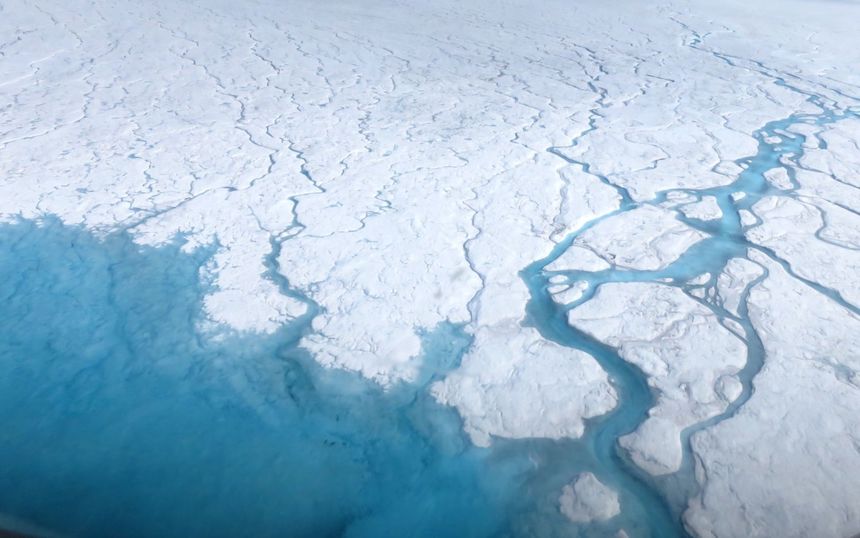
A new study says that the pace of sea level rise has increased significantly over the past quarter-century, with the thawing of Greenland’s ice sheet playing a major role in the steady rise of the oceans.
Reporting in the journal Nature Climate Change, a team of scientists from China, Australia, and the U.S. said that the rate of sea level rise increased to 3.3 millimeters (0.13 inch) in 2014 from 2.2 millimeters in 1993. If the 2014 rate were to continue, global sea levels would rise by 33 centimeters (13 inches) this century. But scientists say that as the melting of glaciers and massive ice sheets in Greenland and Antarctica speeds up this century as temperatures increase, the rate of sea level rise is expected to jump sharply, with many researchers predicting increases of 3 to 6 feet by 2100.
Yale notes that the latest study, released Monday, said that Greenland’s ice sheet accounted for more than 25 percent of sea level rise in 2014, compared to just 5 percent in 1993. Melting of glaciers in the Himalayas, the Andes, and Antarctica also added to the faster rate of sea level rise, as did the thermal expansion of water as oceans warm.
“This is a major warning to us about the dangers of a sea level rise that will continue for many centuries even after global warming is stopped,” said Peter Wadhams of the University of Cambridge, who was not involved in the study.
— Read more in Xianyao Chen et al., “The increasing rate of global mean sea-level rise during 1993–2014,” Nature Climate Change (26 June 2017) (doi:10.1038/nclimate3325)
